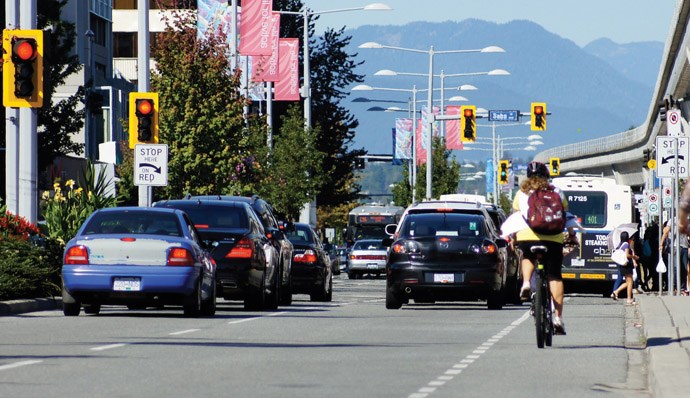Recently, I took a rag to wipe the rain drops off my brand new clothesline and got something I hadn’t bargained for, something sinister and black.
Grime! Or, to call it by another name, pollution.
Pollution, as a term referring to environmental contamination, was first recorded in the 19th century, but not until the middle of the 20th century did pollution of the environment become a commonly heard phrase.
Centuries earlier, pollution’s significance was rather different. The word derives from the Latin “polluere,” meaning to befoul, defile, frequently in a moral sense.
In Middle English (11th-15th centuries), pollution signified profanation; another meaning was “seminal emission apart from coition” (quoted from the Oxford English Dictionary).
Air pollution hasn’t often made local headlines, but one wipe of my clothesline suggested to me that soon it will.
The source of the pollution lurking in my backyard puzzled me at first. And yet, there was something familiar about my grimy rag. I used to have similarly grimy cleaning rags when I lived in Florence, Italy.
Now, if there’s one thing about Florence that’s regrettable, it’s the traffic, which in the centre of town was chaotic as well as a health hazard.
It got so bad that they restricted motor vehicle access to all but residents. They also instituted traffic-free Sundays.
On those occasions, pedestrians and bicyclists thronged the streets, revelling in the absence of exhaust fumes.
No one can dispute that traffic in Richmond is a headache. Drive through the city centre along No. 3 Road or Westminster Highway during working hours, and “drive” becomes a nonsense term.
Cars snake in and out of parking lots and often proceed in hiccups on the road.
Building more and wider roads is no solution. Unless our attitude changes, there will continue to be too many cars on the road.
The number of private vehicles (under 4,500 kilograms) registered in Richmond increases by two or three thousand annually. ICBC provided me with some figures.
In 2010, the number (rounded off to the nearest thousand) was 126,000; by 2013, it had surged to 133,000 – that’s about 7,000 more cars in three years.
The population of Richmond between 2010 and 2013 increased by only 5,000, however.
Richmond’s Sustainability Progress Report seems to recognize the importance of encouraging people to resort to non-vehicular types of transportation.
A graph included in the report shows that 83 per cent of the population still travels by car, while only one per cent cycles.
A few bike paths have been laid out, but they’re used mainly for recreation. People need to be persuaded that cycling can also be part of their daily routine — for commuting to work, running errands, etc.
A network of segregated bicycle paths — not hazardous shared roadways — is wanted, linking residential areas to commercial districts. Cities such as Copenhagen, Amsterdam and Berlin provide excellent examples of how it’s done.
When pollution besmirches my clothesline, I can wipe it away; when it enters my lungs, I can’t.
Think about it. And now, please pump up your old bicycle tires, dust off the saddle, and leave your car at home.
Sabine Eiche is a writer and art historian



